The Radeon R9 280X Review: Feat. Asus & XFX - Meet The Radeon 200 Series
by Ryan Smith on October 8, 2013 12:01 AM ESTOverclocking
With our look at the stock performance of our 280X cards complete, let’s take a brief look at overclocking.
When it comes to overclocking this is going to be a somewhat unfair competition for the two cards. The Asus card has by the very necessity of its existence already been binned. Furthermore while the Asus card supports voltage adjustments the XFX card does not (MSI Afterburner says it does, but adjusting the value has no effect). As such we get to drive what’s already a better GPU harder and with more voltage than the other. Still, this will give us the chance to see where everything will top out at.
| Radeon R9 280X Overclocking | ||||
| XFX Radeon R9 280X DD | Asus Radeon R9 280X DCU II TOP | |||
| Shipping Core Clock | 850MHz | 970MHz | ||
| Shipping Boost Clock | 1000MHz | 1070Mhz | ||
| Shipping Memory Clock | 6GHz | 6.4GHz | ||
| Shipping Boost Voltage | 1.2v | 1.2v | ||
| Overclock Core Clock | 880MHz | 1010MHz | ||
| Overclock Boost Clock | 1030MHz | 1110MHz | ||
| Overclock Memory Clock | 6.6GHz | 6.8GHz | ||
| Overclock Max Boost Voltage | 1.2v | 1.263v | ||
As it turns out, neither card overclocked by very much. The XFX card, lacking additional voltage, could only do 30MHz more, for a 4% base/3% boost overclock. Better luck was found on the memory with a 600MHz (10%) overclock there. The Asus card meanwhile was good for 40MHz more, for a 4% base/4% boost overclock, while its memory could do an additional 800MHz (13%). But at the same time this required dialing the voltage up to 1.263v – as high as we’re willing to go for this card. The power cost of doing that will be extreme.
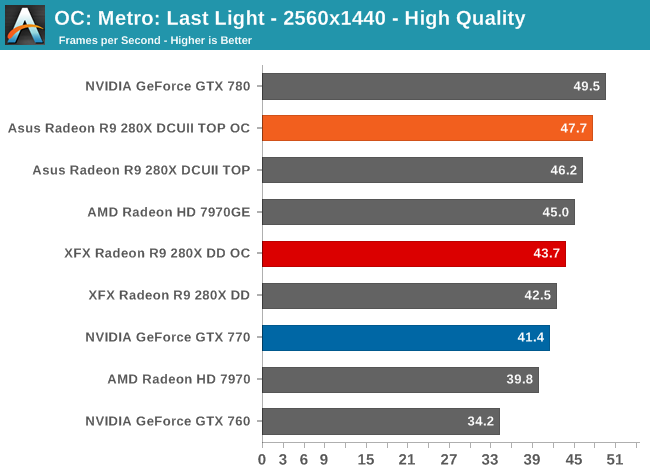
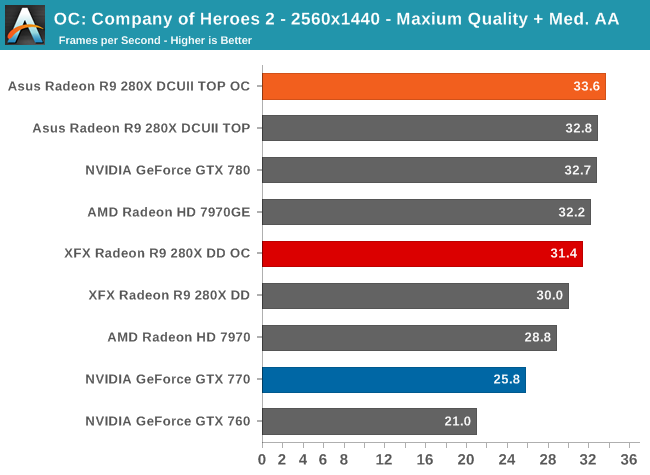
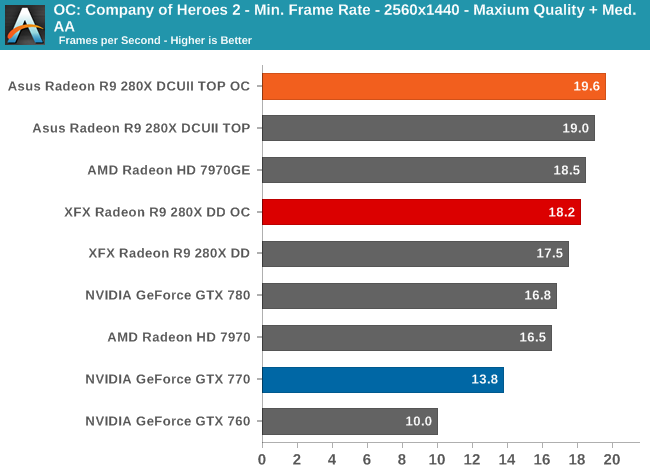
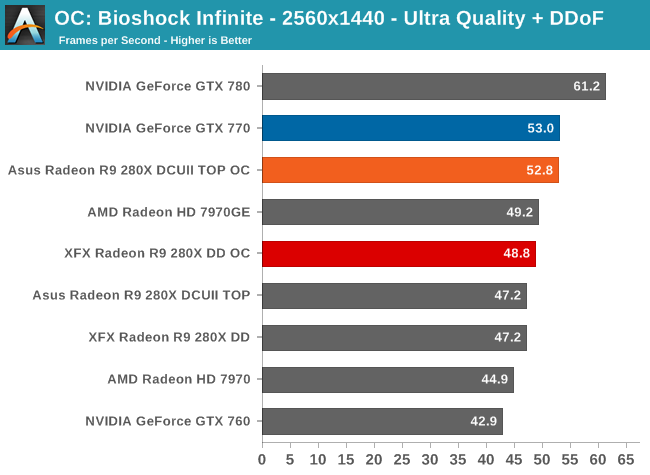
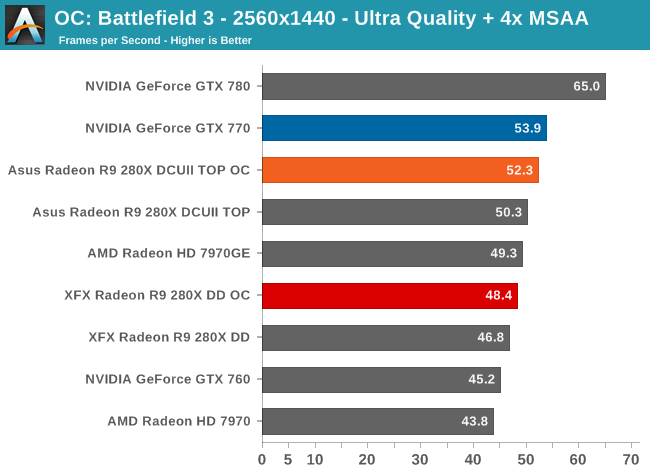
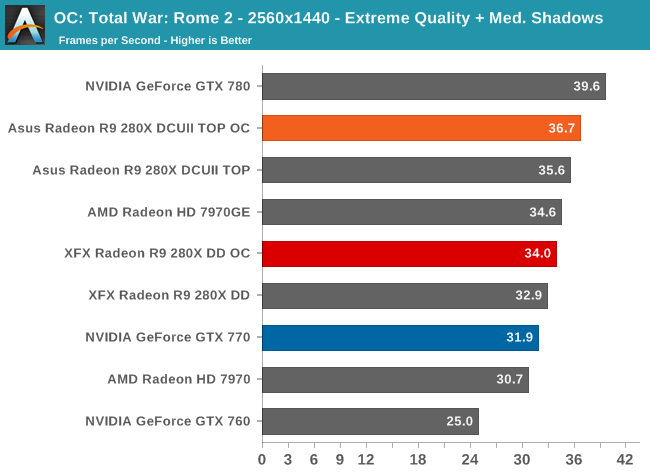
With our 280X cards primarily bottlenecked by GPU performance as opposed to memory performance, the performance gains from our overclocking adventure is limited. 3% on average for both cards is 3% for free, but it’s barely a useful overclock. We typically need 5% before overclocks start becoming interesting and significant enough to improve playability or make higher graphical settings practical.
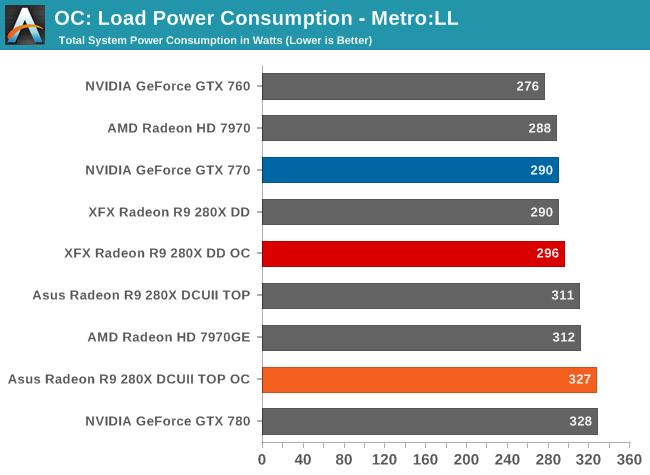
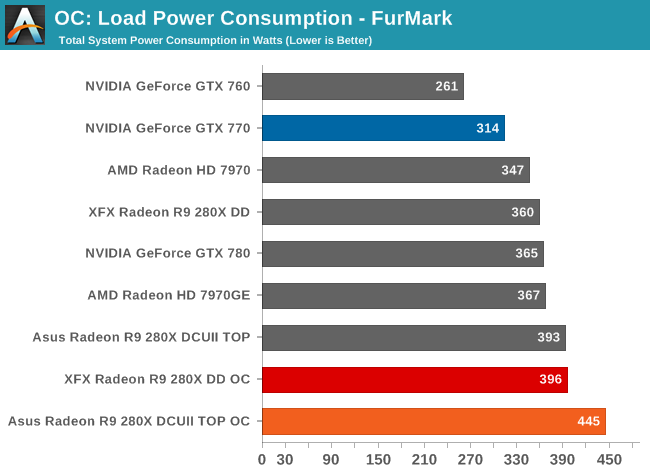
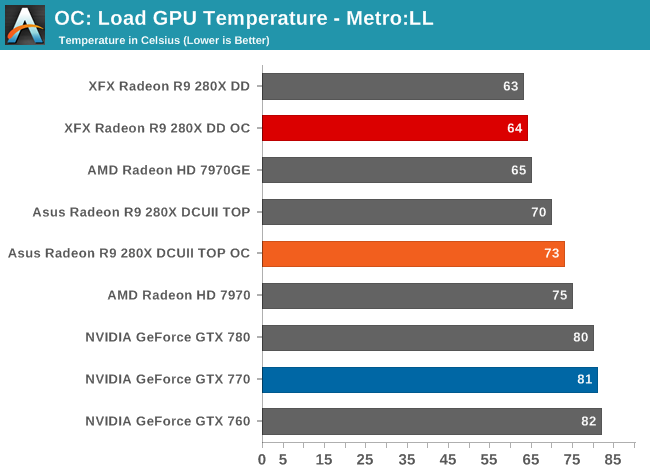
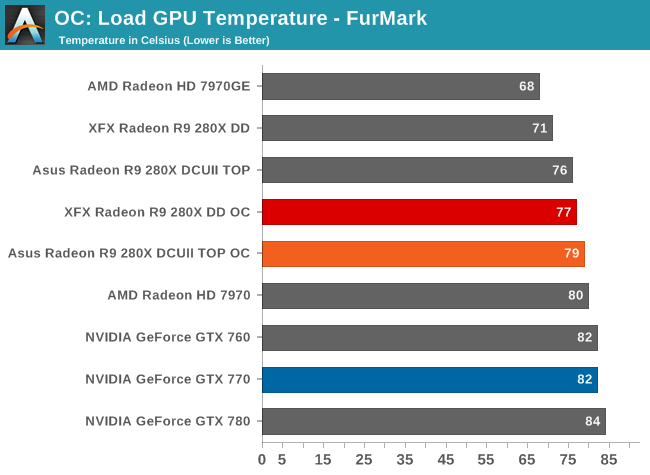
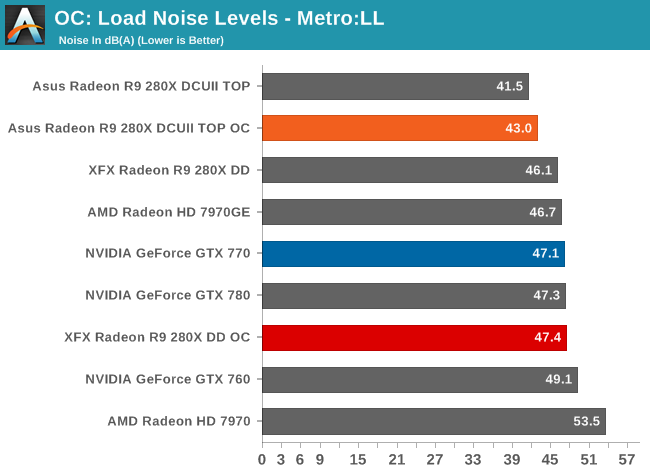
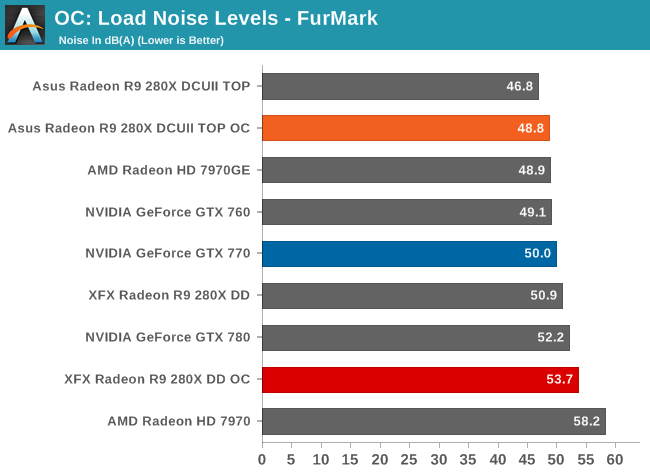
To the credit of the Asus card and its cooler, despite the increased clockspeeds, voltage, and power consumption, it’s able to keep GPU temperatures and load noise to reasonable levels given the circumstances. Still, with the increase in power required to achieve this overclock (particularly in the worst case scenario of FurMark) it’s hard to argue that the additional overclocking was worth the performance gains. With such an extensive factory overclock this is a card that may be better off left at factory clocks.
The XFX card meanwhile suffers much less of a power ramp up due to the lack of voltage control, but we’re still looking at something of a wash on the power/performance front.










151 Comments
View All Comments
rs2 - Tuesday, October 8, 2013 - link
Would still appreciate an explanation regarding what those FP64 ratings actually mean.Ryan Smith - Tuesday, October 8, 2013 - link
FP64 execution speed relative to FP32 execution speed.aTaoZ - Tuesday, October 8, 2013 - link
Love how you guys posted the specs for R9 290X.Rogatti - Tuesday, October 8, 2013 - link
Mantle factor think is relevant (GCN any version)After R290..X review all the cards on the table...probably Christmas 2014 will be AMD
AMD is playing right...
swindmill - Wednesday, October 9, 2013 - link
"What AMD is doing is more than putting on a new coat of paint on the 7000 series but at the same time let’s be clear here: these products are still largely unchanged from the products we’ve seen almost 2 years ago."WTF does this even mean? It's a fracking rebadge, stop trying to make it seem otherwise! Anandtech is clearly on AMD's payroll...
HisDivineOrder - Wednesday, October 9, 2013 - link
Jet lag can make your writing skills unclear. Especially when from tropical island locales, even if it was weeks ago. It happens.Cut the man some slack. ;)
DMCalloway - Wednesday, October 9, 2013 - link
Asus' German site is already showing a R9 280X Matrix. If pricing follows the usual 1 to 1 conversion rate with the Euro then it should retail for a little over $300 here in the States. 12 phase power with an 1100 clock. Strong card for the money IMO. 7970 Matrix is still at $400.Soarta - Wednesday, October 9, 2013 - link
I'd like to know what are the core and memory freq. when the card is idle and connected to more than 1 display, not all of them being connected thru DP.narfsalot - Wednesday, October 9, 2013 - link
Any idea whether a Corsair VX550 will handle the 280x? no OC plannedDMCalloway - Wednesday, October 9, 2013 - link
41A on a single 12V line, you should be fine unless you're running a high OC on a 130W cpu. These cards like most 7970's have a 300W limit.